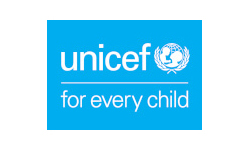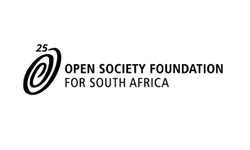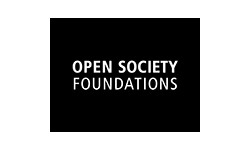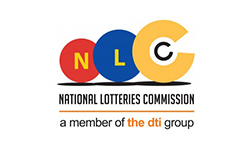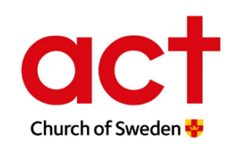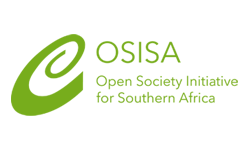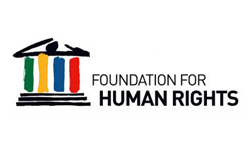Dr Wiseman Magasela – Address at the Decent Standard of Living Colloquium

Address at the Decent Standard of Living Colloquium, 31 October 2019, Burgers Park Hotel, Pretoria
Challenges and Contestations: Building an inclusive society and remaining true to our constitutional values through advancing a comprehensive decent standard of living approach.
Ladies and Gentlemen!
Let us start with the important but often forgotten fact: In South Africa, it is the majority of citizens that is poor. It is the majority of the population that is poor. It is not some minor, low percentage of the population. It is an overwhelming majority of South Africans that are poor.
South Africa presents a very exciting social laboratory when we view and consider what has unfolded since 1994 and what is happening in the economy. This is especially the case for those who lived and suffered under racial discrimination.
We meet at a time when there are a few current events and developments in South Africa that are worth mentioning. Our context, as we explore further the idea of a Decent Standard of Living in South Africa, is indeed important.
One, and not in any order of importance. The Motlanthe Foundation hosted the Inclusive Growth Forum this month. The view of the Foundation is that ‘South Africa is at a crossroads. It may choose a low road, which takes it down a path of corruption, nepotism and enrichment of the elite, leading to a failed State; or it may choose the high road, where leaders chart a course towards social and economic upliftment, ultimately leading to the equal and caring society envisioned in the preamble to our Constitution.’ The relevance of the Decent Standard of Living approach in this view of the Motlanthe Foundation is unambiguous. Two. Plans for the 2nd investment conference are at an advanced stage. From an economic policy perspective, the centrality of bringing in investment for job creation is very high on the Agenda of President Ramaphosa’s New Dawn. Three. South Africa’s National Minimum Wage Act 9 of 2018 came into effect on 1 January this year. The Preamble of this Act recognises that the Republic of South Africa is one of the most unequal societies in the world. Further recognises that there are huge disparities in income in the national labour market and notes the need to eradicate poverty and inequality. According to Schedule 1 of the Act, the national minimum wage is R20 for each ordinary hour. Farm workers are entitled to a minimum wage of R18 per hour. Domestic workers are entitled to a minimum wage of R15 per hour. Workers employed on an expanded public works programme are entitled to a minimum wage of R11 per hour. I am reliably informed that there is an endless, snaking queue going around several blocks, of employers seeking exemption from these set national minimum wage levels, which, they claim, they cannot afford. A debate for another day is the daily transport costs for workers that fall within the jurisdiction of the National Minimum Wage. When the National Minimum Wage was adopted, the President of Cosatu, Zingiswa Losi, said that half the nation would benefit from the minimum wage directly, as 47% of the workforce currently earns below the threshold. Four. The National Planning Commission held a 2 day colloquium in July this year at the University of Johannesburg to review the National Development Plan and to Make South Africa a Developmental State. The Commission made the unsurprising conclusion that no progress has been made on the identified indicators since its inception. Five. The World Economic Forum on Africa set, not for the first time, in the City of Cape Town in September this year. The main topics covered included banking the unbanked; doing business in Africa; asking the question, is Africa ready for the fourth industrial revolution?; the power of digital identities, and many other economic development and economic growth issues. Six. In April this year, President Ramaphosa appointed members of the Presidential Commission on the Fourth Industrial Revolution which is to assist government in taking advantage of the opportunities presented by the digital revolution. Seven. The official announcement of the unbundling of Eskom was made this week. We were assured that this public utility entity will not be privatised. Eight. Yesterday the Minister of Finance presented the Medium Term Budget Policy Statement. The Minister, very surprisingly, made reference to the South African Constitution. He mentioned that in the Constitution, the commitment is made by all of us to: Improve the quality of life of all citizens and free the potential of each person’. The Minister went on to gravely point out that ‘the growth outlook is far too low to support this vision’. Nine. We have the priorities of the 6th administration under an ANC government. Ten and last. Isobel Fryer was on SABC news last night trying very hard to make sense about the need and urgency for more support to poor South Africans to a Wealth Fund Manager who referred to and views all forms of social assistance as handouts!
Ladies and Gentlemen!
The topic is Building an inclusive society and remaining true to our constitutional values through advancing a comprehensive decent standard of living approach. There are a few compelling reasons I settled on this topic. The aim is to highlight the concerns and challenges that characterise our present moment in South Africa. The most important of my reasons is to that the Decent Standard of Living approach resonates very closely with the South African Constitution.
What can we say about the Decent Standard of Living and the Values in the Constitution? Let me start with the Interim Constitution of South Africa of 1993. This Constitution, the Judges asserted then, provides a historic bridge between the past of a deeply divided society characterised by strife, conflict, untold suffering and injustice, and a future founded on the recognition of human rights, democracy and peaceful co-existence and development opportunities for all South Africans, irrespective of colour, race, class, belief or sex. With this Constitution and these commitments we, the people of South Africa, open a new chapter in the history of our country.’
The Constitution adopted in May 1996 in the democratic era, has as its main anchors; the recognition of the injustices of our past; healing the divisions of the past; a society based on democratic values, social justice and fundamental human rights; the improvement of the quality of life of all citizens and free the potential of each person and the Bill of Rights.
The socio-economic rights in the Constitution create a minimum platform or minimum core with guaranteed entitlements for citizens. This is the substantive element of the social justice in the Constitution. The critical element of social justice in the post-apartheid democratic period is distributive justice. This is through constitutionally guaranteed social and economic entitlements that relate directly to multi-dimensional poverty, that relate directly to a decent standard of living. In the South African context, a cogent argument can be made that the provision of adequate housing, quality health care, food, water, social assistance and quality education, and for children, basic nutrition, shelter, basic health care services and quality social services, mean that the social and economic outcomes of the injustices of the apartheid system are addressed and social justice will be attained.
The United Nation’s International Forum for Social Development traces the emergence of the call for social justice as an:
‘... expression of protest against what was perceived as the capitalist exploitation of labour and as a focal point for the development of measures to improve the human condition. It was born as a revolutionary slogan embodying the ideals of progress and fraternity … In the contemporary context, social justice is typically taken to mean distributive justice.’ (United Nations)
The questions we have to ask ourselves are the following: ‘Do the values in our Constitution only apply to the State and Government through adopted policies? What about the private sector? What role, if any, does the private sector have in ensuring that the vision of the Constitution is realised and that all South Africans have a Decent Standard of Living? In a capitalist society, wages are an important means and instrument for the standard of living enjoyed by the population. It is imperative that as South Africa we find strategic ways to bring the private sector as employers who pay wages into the discussions on a decent standard of living to be enjoyed by all. When we read the Annual Reports of big corporations in South Africa, in mining, manufacturing and other sectors, the private sector points to its commitments to the Sustainable Development Goals in very explicit ways. However, there is no explicit commitment to the vision, values and goals of our Constitution. Recent observations tell us that the National Economic Development and Labour Council, Nedlac, is failing in its mandate. Nedlac is, according to its mission, the vehicle by which Government, labour, business and community organisations seek to cooperate, through problem-solving and negotiation, on economic, labour and development issues and related challenges facing the country. Nedlac appears to be the natural home for discussions on a decent standard of living for South Africa.
The Minimum Income Schemes in many countries in Europe establish the minimum acceptable incomes by calculating what is needed to afford an acceptable living standard. The advocacy for these schemes has taken a political hue through taking the minimum income demands to private companies and securing commitment and endorsements from private corporations.
I will end this section with reference to an insightful comment made by the Justices of the Constitutional Court in the Soobramoney versus Minister of Health (KwaZulu-Natal) case decided on 27 November 1997. The Constitutional Court framed its views in this way:
‘We live in a society in which there are great disparities in wealth. Millions of people are living in deplorable conditions and in great poverty. There is a high level of unemployment, inadequate social security, and many do not have access to clean water or to adequate health services. These conditions already existed when the Constitution was adopted and a commitment to address them, and to transform our society into one in which there will be human dignity, freedom and equality, lies at the heart of our new constitutional order. For as long as these conditions continue to exist that aspiration will have a hollow ring.’
Turning to physical efficiency, minimalist poverty measures in democratic South Africa: How did we get here? These prevailing poverty definitions and measures stand in sharp contradiction and conceptual dissonance with the South African Constitution. These measures are empty and bereft of the values in our Constitution.
In South Africa we find ourselves, not using the Decent Standard of Living approach, but the most minimalist poverty lines. Statistics South Africa, the official statistics agency of the country, predominantly uses the food poverty line, the lower bound poverty line and the upper bound poverty line as poverty measures. These are money-metric poverty lines. The worrying fact about these poverty lines is that, even if all South Africans were to be above the upper bound poverty line, millions of South Africans will still be living in poverty. The usefulness of these poverty lines is highly questionable in a country with the kind of history we have. At the political level, we often hear mention of the Freedom Charter, our celebrated Constitution which is lauded as the most progressive in the world, the Reconstruction and Development Programme, the National Development Plan that paints a vision of a society of prosperity, security, dignity and social justice. However, nestled somewhere in the National Development Plan is the goal that by 2030, South Africa should have eliminated income poverty indicated by the reduction of the proportion of households with a monthly income below R419 per person (in 2009 prices) from 39 percent to zero. This is a serious conceptual dissonance in the National Development Plan. In the next iteration of the NDP we are standing hopeful that the Decent Standard of Living will be the adopted approach.
So, how did we get here? The answer lies in the long history of the exploitation of black labour by white mining companies and industrialists in the segregation era and during the apartheid period in South Africa.
An analysis of the laws, regulations, policies, and the many government commissions covering the segregation and apartheid periods, points at explanations for the retention of the wages of black workers at low levels. Starting from the 1920s, the first explanation was that the black worker was seen as not deserving of a wage to support a family because it was taken as a fact that the family he left behind in the reserves was economically self-sufficient. The second explanation was the assumed different standards of living. It was taken as beyond argument that the white worker was entitled to a ‘civilized standard of living’. The black worker, because of his assumed backwardness, did not deserve this standard and was therefore deliberately confined, through law and policy, to a low non-civilised standard of living primarily represented by the low wage. Wages were the main tool used by segregation and apartheid governments in the exploitation of black workers.
In the early 1970s white industrials adopted the Poverty Datum Line as a standard against which to set the wages of black workers. Academic and research institutes such as the Institute for Planning Research at the then University of Port Elizabeth, the Bureau for Market Research at the University of South Africa, the Department of Economics at the then University of Natal, all contributed in various ways in calculating the Poverty Datum Line and its derivatives for African and Coloured workers. According to Edward Batson, the man who pioneered he PDL in South Africa, the PDL represented a ‘sub-standard condition of living’, it was a standard that is ‘not human’, is not even ‘a minimum ideal’, and is only a ‘physiological minimum’ representing ‘existence at the lowest possible level’. This appealed to the apartheid era industrialists and the government. The PDL became a standard for setting black wages which were set lower that the PDL. If we want to know the origins of the grinding poverty, the human destitution, physical deprivation and the deep levels of social and economic disadvantage in South Africa’s former homelands and self-governing territories, the 1913 Land Act and the setting of wages of black workers are the two central factors.
There is a disturbing conceptual convergence between the Apartheid government, white industrialists, apartheid era academics calculating the Poverty Datum Line for wage settings, the World Bank and some influential economists researching and writing on poverty in post-apartheid South Africa. I have already mentioned the PDL and its use to set the wages of black workers which was a collaboration between the apartheid government, white industrialists and academics where science and ideology were in unison. During this period, dietary needs for African and Coloured workers were calculated and were different from the dietary needs of white workers.
The two main studies and analysis of poverty that brought into the post-1994 period physical efficiency and minimalist definitions of poverty are the 1993 Project for Statistics on Living Standards and Development and Key Indicators of Poverty in South Africa. Both were conducted by the World Bank with local collaboration. These two studies became the bridge in the inception of apartheid era poverty definitions in our current context. In 1993, when the transition to a democratic dispensation was inevitable considering the developments at CODESA, and the adoption of the interim Constitution, a study aimed at gathering data and information on poverty in South Africa was undertaken. This study, was undertaken at the behest of the ANC before the 1994 elections (SALDRU, 1994). The ANC requested the World Bank, in collaboration with South African researchers, to conduct a comprehensive national survey aimed at providing a clear and accurate picture of levels of deprivation in South Africa with the intention of creating ‘effective strategies to combat poverty’ (SALDRU, 1994). The outcome was the Project for Statistics on Living Standards and Development (PSLSD) undertaken during the nine months leading up to the country’s first democratic elections. The study captured different aspects of living standards and covered demography, household services, household income and expenditure, educational status, remittances, marital maintenance, land access and use, employment, health status and anthropometry (SALDRU, 1994). At the completion of the data gathering, a publication containing statistical tables with information on living standards was issued to be used as widely as possible. The PSLSD was very similar to World Bank sponsored Living Standards Measurement Surveys undertaken in many developing countries.
In October 1995 the Ministry in the Office of the President: Reconstruction and Development, published Key Indicators of Poverty in South Africa: An analysis prepared for the Office of the Reconstruction and Development Programme by the World Bank. This study was based on the PSLSD. It was the first instalment at the measurement of poverty using various definitions in post-1994 South Africa. Conclusions drawn were that poverty in South Africa has a race dimension, a rural dimension, a regional dimension, a strong employment dimension and a strong gender and age dimension. The Key Indicators of Poverty in South Africa report has been quoted and used as a basis for the extent of poverty in South Africa in many subsequent poverty studies. Poverty definition and measurement is clearly spelt out in this study as five different types of poverty lines are used to analyse and conclude on poverty levels in South Africa. The Poverty Datum Line, which was renamed the Household Subsistence Level, and the Minimum Living Level which was lower than the Poverty Datum Line, feature in this post-apartheid first official study and analysis of poverty. The World Bank’s Key Indicators of Poverty of Poverty in South Africa set the trend and what has become the conventional approach in poverty measurement in South Africa in the post-apartheid, democratic period.
Two important facts that I need to remind all of us of. At the very time that the World Bank was conducting the Project for Statistics on Living Standards and Development and Key Indicators of Poverty in South Africa, South Africa had adopted the 1993 Interim Constitution which was considered to be ‘a historic bridge between the past’ and ‘a future founded on the recognition of human rights’. Further, around the same period, the White Paper on Reconstruction and Development (RSA, 1994) the mission of the new government is captured in these words:
‘At the heart of the Government of National Unity is a commitment to effectively address the problems of poverty and the gross inequality evident in all aspects of South African society … [and] ... alleviate the poverty, low wages and extreme inequalities in wages and wealth generated by the apartheid system to meet basic needs, and thus ensure that every South African has a decent living standard and economic security.’ (RSA, 1994)
This marks a clear intention and practice to ignore, deliberately so, central and foundational documents that vividly articulate and express the values, vision and aspirations of the type of society South Africans had begun to build.
I will use the example of the Poverty and Inequality Report published in 1998 under an Inter-Ministerial Committee. The World Bank’s Key Indicators of Poverty lay the foundation, the Poverty and Inequality Report took this study as its point of reference. The Poverty and Inequality Report was conducted for the government and was endorsed by South Africa’s Cabinet. The conceptual terrain on poverty, as captured in this report, demonstrates the sources from which experts leading studies and analyses of poverty drew their expertise and knowledge from. Crucially, this expertise and knowledge was to inform policy concepts and definitions of poverty and policy choices in post-apartheid era. Overall the studies on poverty in the post-apartheid era, capture and illustrate the predominant perspective on the conceptualisation and definition of poverty and these are the minimalist, absolute and physical efficiency perspective on the definition and measurement of poverty.
The focus on money metric poverty measures and not approaches that carry and reflect what we aspire to become is further evident in our separation of social policy from economic policy. In South Africa, when we plan, we separate these two. In my view this is one of the biggest shortcomings in our government planning systems and structures. At the level of government departments, the silo, compartmentalised thinking and planning is deeply entrenched.
I will present four sources to direct our thinking on this very crucial matter. These are David Gil, an American scholar of social policy, a reference to the definition of social policy that was adopted by SADC countries, the views of Dr Zola Skweyiya, the former Minister of Social Development, and I will end with a Resolution of the United Nations.
David Gil in the book Unravelling Social Policy, places accent to the connection between the social and the economic. He states that;
Economic policies which shape the management of resources, the organisation of work and production, and the exchange and distribution of goods and services, are not a separate policy domain, but an integral aspect of social policies. Economic policies are, however, frequently separated conceptually from social policies. Such a separation leads to a view of economic activities as disassociated from human needs, social values, and social purpose. Moreover, the separation inhibits development of effective social power and social relations. Finally the separation reduces social policies conceptually to a residual function, focused mainly on victims of economic policy. Many social scientists and journalists tend to accept this conceptual separation, although it lacks a sound theoretical rationale.
In November of 2006, high level civil servants, Ministers of Social Development in the SADC region and academics deliberated on social policy matters in the region. The session concluded with a stated view on what social policy is. Thus;
Social policies at the national level are collective state-led measures, implemented by the central and local governments and other stakeholders such as organized employers and workers, the broader private sector and civil society, as well as international development partners. Social policies are interventions which are about promoting the wellbeing of all citizens and which address structural inequalities in wealth, ensure greater equity and equality for all, correct market shortcomings, reduce poverty and promote social inclusion.
Social policy and economic policy are therefore interdependent as well as synergistic, and NOT antagonistic. Economic and social policies need to be promoted in parallel, in a mutually reinforcing way, from an early development stage, as part of the country's national development strategy. All economic policies have different distribution impacts and it is essential that national development is based on decent work and macroeconomic and sector policies that raise people’s incomes and foster social inclusion. Social and economic policies should be integrated, promoted in parallel, in a complementary manner.
At that same conference, the late Dr Zola Skweyiya went onto to make the observation that;
Evidence has shown us that human and social development can no longer be an accidental outcome of economic development and economic growth. There are many examples in the world today which tell us clearly that economic growth has not translated into positive social outcomes for the millions who live in poverty. As such the poor have continued to be poorer with increasing levels of inequality. This situation calls upon us as governments in the region to ask these critical questions when we plan for economic development and economic growth: “economic growth to what end? ‘economic growth for what purpose?”
The United Nations Commission for Social Development, passed Resolution 40/1 on the ‘Integration of social and economic policy’. This resolution urges Governments to;
- Integrate social and economic policies in order to eradicate poverty, promote full employment, enhance social integration, achieve equality between women and men, ensure access to basic social services for all, reduce inequality and mitigate adverse impacts of economic shocks; and,
- Promote strategies that favour sustainable and stable economic growth benefiting all, poverty eradication, full employment and social integration as an integral part of social development.
Now, what is the view and the take of our Government on the Decent Standard of Living approach? Let us recall that last year through this initiative on the Decent Standard of Living, research conducted showed that R7 043 was the income figure cited to attain the standard. The predominating view in Government is that there is provision of free housing, free education, 17 million plus South Africans receiving social grants, there are Free Basic Services, the National Minimum Wage has been enacted and every government department, from health to co-operative government and local government, agriculture, sanitation and land reform, has some pro-poor, anti-poverty programme.
In the view of government, this is a clear indication of commitment to the progressive realisation of social and economic rights in the Constitution. Therefore, there is the social wage which contributes to a decent standard of living. What is needed is to ‘grow the economy’, create jobs and all else will fall into place. There is, for instance, no clear, strong and direct articulation and expression that the investments must create decent jobs with the goal of a decent standard of living for all South Africans. We will count our success, not in the number of jobs created, but in the trillions of rands of investments attracted.
Our challenge in promoting the Decent Standard of Living means that we have to:
Building the bridges between decision makers in key political parties and senior policy makers and the knowledge and approaches (DSL) on poverty measures.
There is a starting point (the Constitution and housing, education, FBS, social grants, the NDP and the social floor). There is a growing number of studies that have been conducted in South Africa that reject the physical efficiency approach. The focus on socially perceived necessities is one such approach.
Our biggest challenge in South Africa is how we bring in the private sector through wage levels into the DSL approach. This is going to be very challenging as business and its private corporations have been elevated to the status of saviours as South Africa seeks investments.
Our Constitution remains the embodiment of the aspirations of South Africans. The Decent Standard of Living speaks in a very convincing way to the vision of decency, dignity, prosperity for all and the building of a society that radically departs from race as a marker of social disadvantage.
Such a society is desirable and urgent.
Thank you for listening.
Recent Posts
- Can we afford NOT to have a BIG in South Africa? – Podcast
- Joint Stakeholder Submission on the Right to Adequate Standard of Living in South Africa
- SPII’s Contribution – Submission to UN CESCR
- Political Elites Must Break Ranks to Crush Poverty, Inequality
- Podcast: High Price to Pay for the Rising Cost of Living
- More People Believe They Are Living Under Poverty in South Africa
- Nkululeko Majozi Speaking on Subjective Poverty in South Africa
- Podcast: In The Ring With Eusebius McKaiser – Can we afford a Basic Income Grant?
- Extending the Social Relief of Distress grant is not enough to alleviate plight of poor, says civil society
- Global Basic Income Grant Pilots Since 2000

